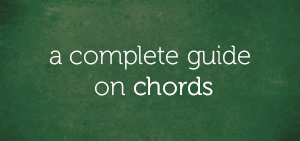When it comes to playing by ear, there is no skill more important than knowing how to find the key of a song.
Sight readers don’t have to acquire this skill because the sheet music will always have the key notated in the grand staff by the number of flats or sharps present. If a sight reader sees 1 flat, they know the music is in “F Major” (because F major has 1 flat in its scale). If they see 2 sharps, that means “D major” is the key because it has 2 sharps in its scale.
As an ear player, this information isn’t readily available. You most likely have no sheet music in front of you. The artist isn’t calling out the key of the song before they sing their first line (wouldn’t that be nice though?). Before you can apply a scale, figure out the chords or patterns at work, and improvise, you have to know what key you’re in.
Here are a few myths about finding the key and the truth about the process. It’s not as hard as you think. In fact, I encourage you to watch this free 30-minute lesson that’ll teach you exactly how to do it.
Myth #1 – You have to be gifted
This is probably the most widely accepted myth… and it’s not true! You can acquire the skill to play by ear. You don’t have to be gifted or have perfect pitch. In fact, only “1 in 10,000” people (.0001) have perfect pitch. Believe it or not, it has little to do with playing by ear.
Figuring out the key of a song is a process. It starts with simply humming and ends with finding the note you’re humming on the piano and confirming it’s indeed the right note (which I show you how to do). In fact, the piano only comes in at the end. Finding the key is more about what’s going on in your head and less about your instrument. Watch my free tutorial for full, step-by-step instructions.
Myth #2 – It takes a long time to master
This is another myth that simply isn’t true. My 30-minute tutorial has received well over 100,00 views on youtube and 300+ comments. Dozens and dozens of musicians from all over the world have commented how they had no idea how to find the key of a song and after 30 minutes with me, they figured out majority of the songs I presented at the end.
It’s not about time. Sure, you’ll become FASTER at figuring out the key over time but the skill usually comes in seconds, once you unlock your ear to hear the key. It’s usually an “AH-HA” moment… a breakthrough. Not something that gradually happens.
(Music is filled with a lot of “graduals” — things that come over time like finger speed, chording, and fluidity. But knowing how to find the key of a song is something that usually comes pretty quickly. It’s the most important skill, yet the one that can be grasped in 30-minutes once you get it.)
Myth #3 – It’s more about guessing
This couldn’t be farther from the truth. And sadly, many classical or traditionally-trained players think of playing by ear as the unorganized, theory-less, feeling-only side of music. Not true.
Playing by ear incorporates music theory, systematic thinking, and a knowledgebase of chords, voicings, patterns, number systems, and more. Sure, a lot of ear-players simply learn to pick up things on their own without the theory and systems but inevitably, to get to the next level, that talent has to eventually meet knowledge.
Once you watch my 30-minute tutorial, you’ll see even how finding the key can be systematic. I even give a Litmus test of sorts to make sure you have the right key.
——-
Finding the key of a song is the #1 skill you must have as an ear musician. Without the ability to find the key, nothing else can happen. If you’re stuck at this stage, now’s the time to do something about it. Watch my tutorial and let me know what you think.
Until next time ~







Comments on this entry are closed.